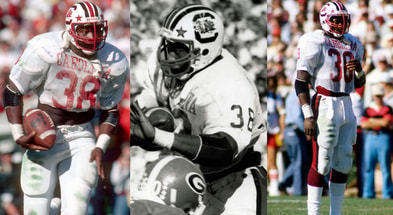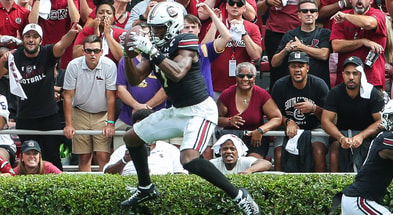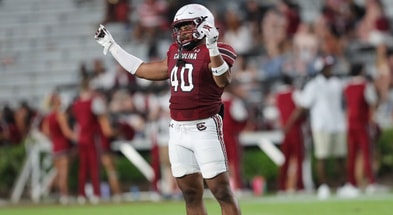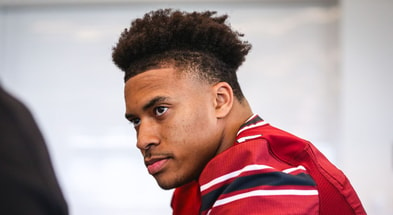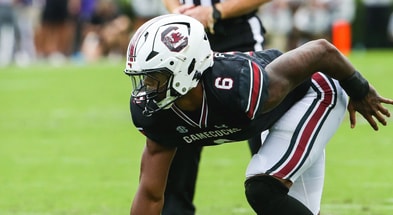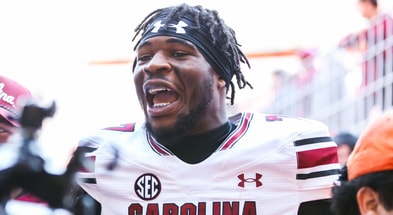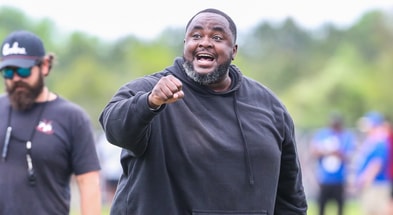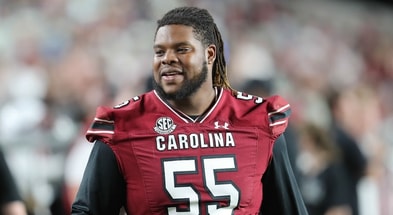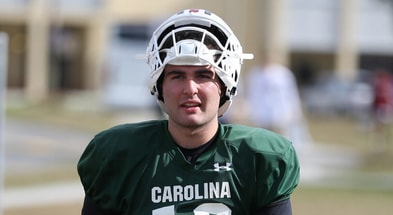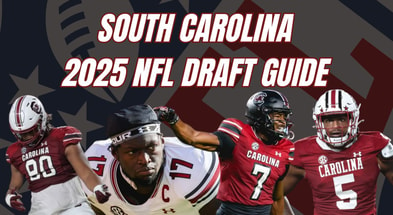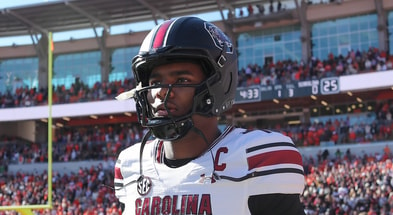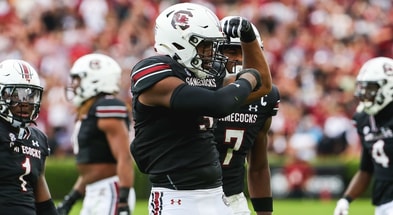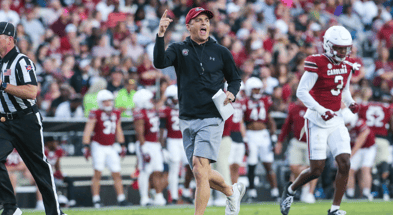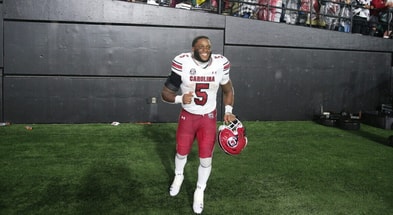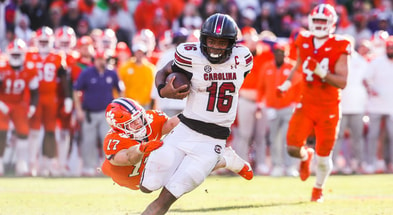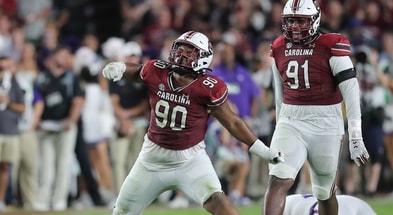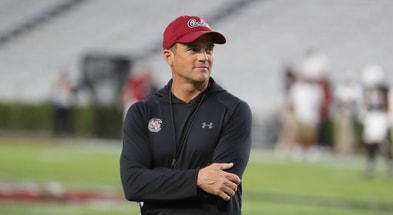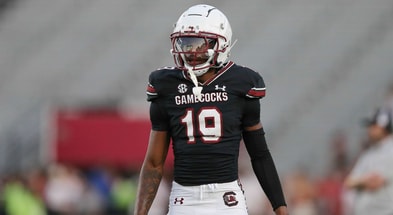Near riot at The Horseshoe: Aftermath of the 1902 South Carolina-Clemson football game

This item was originally published on Aug. 19, 2023.
Alan Piercy is the author of A Gamecock Odyssey: University of South Carolina Sports in the Independent Era (1971-1991).
“Standing on the wall between the two crowds, I could see the true situation.”
It was bound to happen sooner or later.
Take a toxic history between two state colleges, the stimulating elements of a violent game, and a resounding upset leading to unbridled jubilation on one side, and 400 armed and angry cadets on the other. Mix in youthful indiscretion and perhaps some illicit sipping of contraband hootch amid the garish spectacle of a carnival atmosphere. Downtown Columbia was an oxygen-rich environment following the Carolina-Clemson football game of 1902. A simple spark would set it all off.
The spark came in the form of a drawing by F. Horton Colcock, a professor at the University of South Carolina, which at the time was chartered as South Carolina College. The large drawing, which papers described as a “transparency,” hung in the window of a Main Street tobacco merchant, depicting a bedraggled tiger prostrate beneath a crowing gamecock. Innocuous under normal circumstances, the transparency set off a chain of events in that charged atmosphere which led to the brink of an armed battle at the gates of USC’s normally tranquil Horseshoe.
A rivalry born of bitter political feuds
The Carolina and Clemson football teams first met on November 12, 1896, in the troubled political times of post-Reconstruction South Carolina. Clemson College had been largely the creation of former Governor Benjamin Tillman, the agrarian populist from Edgefield County. He called the meager agricultural offerings at USC, “pitiful, deplorable,” and demanded a separate agricultural institution for the state.
Tillman’s vision became a reality when Thomas Green Clemson, the son-in-law of former Vice President, U.S. Senator and influential succession proponent John C. Calhoun died in 1888. Clemson bequeathed the Calhoun estate and around $100,000 for the founding of a new agriculture college. Named for Clemson, the college opened one year later, in 1889.
Tillman harbored naked antipathy toward the state’s establishment “Bourbon” Democrats and the institution he viewed as their avatar, the University of South Carolina, calling it the “seedbed of aristocracy.” Tillman won election to Governor in 1890 with an openly-expressed agenda of shutting down the University. Doing Tillman’s bidding, the Legislature in short order reallocated substantial funds from USC to Clemson College. The University was rechartered as the South Carolina College the same year, and by 1894 was down to 64 active students. Clemson’s enrollment meanwhile grew to several times that.
Football comes South
Around this time, as former Gamecock historian Don Barton noted in his 1967 history of the rivalry, The Carolina-Clemson Game, the South had reluctantly accepted the spread of a Yankee-conceived sport which was a spin-off of English soccer and rugby. The first college football contest occurred on November 6, 1869, between Princeton and Rutgers in New Brunswick, New Jersey (Rutgers won, 6-4).
From the beginning, football aroused the passions of onlookers, though what passed for heckling in the highly decorous Victorian era was mild by today’s standards. According to Politico Magazine’s David Dayus, during that first game a Rutgers professor, perhaps indignant over a rough tackle, chided a Princeton player with shaking fists, “You will come to no Christian end!”
Indeed, the attitudes of administrators toward the new game largely ranged from indifference to hostility. Cornell President Andrew D. White, responding to a proposed football contest between Michigan and Cornell in 1873 said, “I will not permit thirty men to travel four hundred miles merely to agitate a bag of wind.”
But enthusiasm around the game grew rapidly, and by the turn of the century, football had taken hold down South and across America.
South Carolina first took to the gridiron in 1892. That original team traveled without the permission of school officials to Charleston on Christmas Eve, where they met the Greenville-based Furman Purple Hurricanes, as they were known early on. Furman had begun its program several years prior, playing Wofford in South Carolina’s first intercollegiate football game in 1889. By the time the Hurricanes met South Carolina, they had built a powerful team.
Furman rolled, 44-0 in that first game against a hastily-assembled Carolina team. Despite the loss, college football had arrived, albeit surreptitiously, at the University of South Carolina.
Though the university did not field a team in 1893, football returned to Carolina in 1894, although with no greater success. That team was the first to endure heartbreak against Georgia, losing 40-0, and suffered the ignominy of a 16-4 loss to a team from the Augusta YMCA (contests versus non-collegiate organizations were commonplace in the early days of the game).
Carolina first tasted victory in 1895, with a 20-0 win over the Columbia Athletic Association, and its first win in a collegiate contest, a redemptive 14-10 win over Furman, followed by a 10-0 shutout loss at the hands of Winthrop.
The inaugural matchup with Clemson provided a lone bright spot for Carolina in 1896. The State called the matchup “one of the best attractions of fair week.” It was essentially a side-show, a minor attraction amid the highly anticipated State Fair festivities which attracted citizens in droves from across the Palmetto State to Columbia each fall.
Carolina and Clemson met that year as the Jaguars (or “College Boys,” accounts vary), and the Ploughboys respectively. It would be a few years before the Gamecock and Tiger nicknames took hold.
Despite the threat of rain, around 2,000 spectators plunked down a quarter apiece for a seat in the rickety wooden grandstands at the old state fairgrounds off Elmwood Avenue. Clemson took the field in orange sweaters with orange and blue stockings, while Carolina entered in garnet sweaters trimmed in black. Carolina partisans greeted the team with “the sound of horns and cheers,” according to Barton.
South Carolina scored a 12-6 win in that first game of the series, its only win of that season against three losses. Clemson dominated the next four contests from 1897-1900 by a combined score of 129-6, including three straight shutouts between 1898-00.
Mercifully, the two teams did not meet in 1901.
1902
By 1902, the Clemson program was rolling under the tutelage of none other than John Heisman, for whom the Heisman Memorial Trophy would be named following his death in 1936. Heisman was an early innovator of the game, and had enjoyed great success at Auburn before coming to Clemson. He coached four seasons for the Tigers, which they were by then known. He coached baseball as well, and still holds the highest winning percentage at Clemson for both programs.
Carolina meanwhile turned its coaching reigns over to a 25-year-old former star player at Virginia, Charles Robert (Bob) Williams. He was a coaching novice, looking to make a winner in South Carolina against all odds. Assisting Williams was Christie Benet, who starred as a player at South Carolina before transferring to Virginia where he played alongside Williams.
1902 marked a new era of Carolina football beyond the coaching change. “Jaguars” and “College Boys” had lost traction by this time, in favor of “Gamecocks.” It was likely a nod to Revolutionary War hero Thomas Sumter of South Carolina, known as the “Fighting Gamecock,” for the ferocity of his fighting style against British forces. Newspaper coverage of earlier Carolina football victories had also described the team’s efforts as “like that of fighting game cocks.”
Williams proved a resounding upgrade as coach, leading the Gamecocks to the program’s first 3-0 record to start the season. The Gamecocks outscored their first three opponents, tiny Guilford College, North Carolina Military Academy, and Bingham by a combined 98-0 ahead of the annual matchup with Clemson on Thursday, October 30.
Despite South Carolina’s insurgent campaign, few thought the Gamecocks stood a chance versus a Tiger program Heisman had built into a juggernaut. Clemson had gone undefeated in 1900, and lost just one game in 1901. In the opening game of that season, the powerful Tigers trounced hapless Guilford 122-0.
Clemson matched Carolina’s 3-0 start in 1902, rolling over N.C. State, Georgia Tech and Furman by a combined score of 83-10, setting the stage for a matchup of the unbeaten in Columbia during State Fair week.
Despite dim prognostications, a highly vocal crowd of 3,000 mostly Gamecock partisans jammed into the State Fair grandstands, and were treated to perhaps the most memorable afternoon in the brief but spirited history of the budding rivalry.
The game
Despite cool temperatures overnight, the mercury climbed to a balmy 60 by kickoff at 11 am on Thursday, October 30. It was “Big Thursday,” as promoters and fans had taken to calling the Carolina-Clemson contest. By 1902 the game was no longer a side-show, but one of the premier features of State Fair week, and the most anticipated game of each season for both teams. The State proclaimed in the next day’s edition that Thursday’s crowd was the largest ever assembled in state history.
The fair lent a carnival atmosphere to the game each year, adding a kaleidoscope of color and supporting characters. Newspaper reports noted the abundance of vibrant ribbons worn by young attendees, not only Carolina’s garnet and black, and Clemson’s orange and purple, but the colors of local high schools and other colleges from all points of the state were represented as well.
In attendance were former coaches Walter Riggs for Clemson and “Dixie” Whaley for Carolina, who were each in command of their respective clubs during the inaugural game in 1896. As the 11am kickoff approached, reports noted the appearance on the field of “two open carriages filled with beautiful young ladies,” one sporting orange, the other garnet.
Fans of both schools traded cheers, and Carolina supporters sang a good-natured taunt, “we’ll twist the tiger’s tail,” in the jaunty, sing-song style of the day. Four hundred Clemson cadets in their military finery were assembled in one section, lending a vaguely warlike element to the proceedings. A ragtime band played Dixie, as the sweet aromas of tobacco smoke and latticed fruit pies of fair week baking contests perfumed the autumn air.
Clemson kicked off to start the game, and Carolina’s Guy Gunter fielded at the Gamecock ten, returning it ten yards to the twenty. From there, the Gamecocks employed a grinding run game, highlighted by the “Yale tackle-back formation,” picking up chunks of yardage with each play from scrimmage. Fullback Gunter rumbled in from the four-yard-line and Johnnie Withers kicked the point-after for a surprising 6-0 Gamecock lead with six minutes gone (touchdowns were worth five points at the time).
Clemson couldn’t move the ball on their ensuing possession, and Carolina’s Sidney Smith broke through the line for a blocked punt, which Ralph Foster recovered for the Gamecocks at the Tiger 20. Gunter traded carries with Eugene Oliver to push the ball to Clemson’s four-yard-line, and Gunter again carried it in to push the Gamecock lead to 12-0 before halftime.
Despite missed opportunities to add to their lead in the second half, the Gamecock defense held Clemson to six points, which the Tigers scored on a thrilling 60-yard gallop by their left-end Sitton, and a point after by Maxwell.
Carolina held on and surprised all with the 12-6 victory, the same score as their only other win versus Clemson in 1896.
Clemson’s Heisman spoke graciously of the outcome, “Carolina simply outplayed us. She has a hell of a right to feel proud of her magnificent team, and the great game they put up,” adding it was his belief that Carolina had a team equal to any in the South.
Barton notes in his The Carolina-Clemson Game, the 1902 contest was memorialized in the Garnet & Black yearbook with a student-penned poem, the last verse of which read:
“Carolina won, old Clemson fell,
In future years, our kids shall tell,
For we did give those tigers, well,
Three cheers for Carolina!”
Jubilant Carolina students and fans spilled out of the old grandstands and headed across Elmwood to Main Street, where celebrations continued well into the evening.
Amid the celebrations, a group of students “borrowed” the transparency from the tobacco merchant’s window and paraded it several blocks before being confronted by a group of Clemson cadets who took exception to the unflattering depiction of a defeated tiger. The confrontation grew heated and a scuffle ensued, cadet’s swords were drawn, and two Carolina students were slightly wounded before the parties were separated and went their separate ways.
The stage was set for trouble during the next day’s annual parade, in which both Carolina students and Clemson cadets would participate. All during the day on Friday, Clemson men boasted they would not allow such a transparency to be carried through the parade. They were boasts which only emboldened the Carolina boys who were flush with victory and eager to continue the celebration.
The Battle of Horseshoe Gate
“We ordered them to halt, and I recognized Major Wiley of the Clemson battalion, and told him that should his men come on the sidewalk the trouble would start.”
The pinnacle of State Fair week in those days was the annual Elks parade on Friday afternoon. Newspaper reports gushed over the success that year’s fair had enjoyed, noting with unbridled exuberance, “this has been the greatest carnival of pleasure in the history of Columbia.”
Carrie Nation, a noted celebrity and barnstorming temperance movement activist made an appearance, delivering speeches outside Clemson’s weekend headquarters on Main Street. Known as “Hatchet Granny,” the diminutive but spunky Nation did not dabble in subtlety, noted as she was for attacking taverns with a hatchet. She described herself as “a bulldog running along the feet of Jesus, barking at what he doesn’t like.” Newspapers reported Nation did a “rushing business” selling tiny souvenir hatchets to the crowd, claiming the proceeds were for building a home for drunkard’s wives in Kansas.
Top 10
- 1Breaking
Quinn Ewers drafted
Texas QB off the board
- 2
Dick Vitale
Bold Shedeur Sanders prediction
- 3Trending
Mel Kiper
Eviscerates NFL: 'Clueless'
- 4Hot
Costly fall in NFL Draft
How much plummet costs Shedeur Sanders
- 5
Prank Callers revealed
Video of Shedeur Sanders prank callers
Get the On3 Top 10 to your inbox every morning
By clicking "Subscribe to Newsletter", I agree to On3's Privacy Notice, Terms, and use of my personal information described therein.
Nation was not alone in her hucksterism, as side shows drew the curious and gullible with elements of the surreal. Boko the snake eater, a two-headed calf, and one unfortunate soul known only as the “victim of Mont Pelee” provided ample opportunity for gawking. Reports noted carnival barkers “reaped in the golden harvest with eager hands.”
As time for the parade approached, Gamecock assistant coach Benet, who was overseeing the Carolina contingent, received word from an orderly that Columbia Chief of Police Daly wished to see him. When Benet approached Daly, Colonel Sirmyer, the Commandant of Clemson’s corps was with him, both men mounted on horseback. Sirmyer, resplendent in his military regalia, sternly warned Benet against allowing Carolina’s students to carry the transparency into the parade, saying it would be an insult to his cadets.
At this point, Benet briefed Chief Daly on the incident of Thursday evening, in which two Carolina students had been injured by Clemson cadets. Benet, finding Sirmyer’s request unwarranted, flatly refused. Clemson cadets, after all, had in previous years marched in the Friday parade with their shoes wrapped in garnet and black cloth, symbolically and literally grinding the Garnet & Black into the dust. It was Carolina’s time to crow now, and Benet advised the transparency would indeed be carried into the parade.
At this, Sirmyer stated to Chief Daly that if the transparency were carried, he would not be responsible for the actions of the men under his command. At that point, according to a summary of events provided to The State by Benet, a cadet approached Sirmyer and said at a performative volume, “We will get it if they take it in,” to which Sirmyer turned in his saddle and replied, “I know you will.”
Chief Daly and Columbia Police Captain Gonzales rode to the Carolina student formation where they saw the transparency and said they saw nothing objectionable about it, but asked the students, for the sake of peace, to go into the parade without it. But just then the time came for the Carolina students to enter the parade, and band music likely prevented most students from hearing the plea.
The Carolina students completed their march from north to south along Main Street in the direction of the Capitol. It went off mostly without incident, save for a stone which was reportedly thrown from the crowd, striking the car which carried the transparency as it passed Clemson’s headquarters in the old agricultural hall. “We cheered the Clemson corps as we passed them in the parade,” Benet said, “and they returned the salute.”
After completing the parade route, students made their way back to campus, where Benet gave a short speech, saying, “Carolina had carried her point,” and urging them to be careful to avoid any trouble that evening, at which he left them, walking north from the Horseshoe along Sumter Street back toward Main.
As he approached the intersection of Pendleton Street, Benet was stopped by a group of straggling students who told him the Clemson corps were just a block behind, coming in force toward the campus gates. At this, Benet hurried back to campus where he joined about thirty students behind a low wall at the gates of the Horseshoe. The group hastily took position and prepared to defend the campus.
“We had scarcely taken our position when the cadets were right in front of us,” Benet wrote, adding, “…they were very angry. They advanced toward the campus. We ordered them to halt, and I recognized Major Wiley of the Clemson battalion, and told him that should his men come on the sidewalk the trouble would start.”
The cadets stopped at the edge of the sidewalk, drawn up into close formation parallel to the wall. They numbered around 400, all with sidearms and sabers. Carolina students meanwhile armed themselves as best they could with a few pistols and knives, and anything else that might be of use in the impending conflict.
J. Rion McKissick, who was among the Carolina students at the wall, and who would later become president of the University, was asked by a comrade, “McKissick, are you armed?” After McKissick produced a revolver of “questionable virility,” his companion exclaimed, “McKissick, make every shot count!”
Benet recounted climbing atop the campus wall between the two crowds, saying of his suddenly elevated view, “I could see the true situation.” By this time around thirty additional Carolina students had joined, as the ragtag assembly prepared to defend the campus against the greatest of odds.
Hoping to prevent a bloody riot, Benet shouted a proposal above the din of taunts and jeers, offering to fight any Clemson man willing to represent their side of the question. After the proposal went unanswered, Benet repeated it, as an awkward quiet descended. “There was still no acceptance,” Benet wrote of the moment, “and seeing that the men were still in a riotous mood, I proposed that we arbitrate the matter.” Benet suggested that a committee of three students from each side be appointed and that the action of the committee be final and accepted by both student bodies.
By this time, Chief Daly and a squad of policemen arrived and worked to calm the corps. Through quick thinking and bold action, Benet bought just enough time to avert what would have surely been a bloody and perhaps deadly confrontation.
The committee agreed that the transparency should be burned, and that “the burning of the transparency should be a pledge on the part of each student body that all trouble and animosity would be burned with it.” Benet urged the Carolina students to accept the compromise, which they reluctantly did, realizing they were honor bound to do so.
Each of the six committee members lit a match, and quickly the flames ate their way into the painted cloth. Dancing embers glowed against the gathering darkness of an early evening sky as the Clemson corps gave three cheer for Carolina, which were returned in kind.
After the negotiated ceremony ended and the last smoldering shreds of the transparency fell to the ground, the cadets dispersed and silence replaced what had only minutes before been the cacophony of battle cries and rattling sabers. Acting University President Benjamin Sloan made a short speech to his students, imploring them to be generous to a fallen foe and citing the example of all truly great conquerors.
“With that,” Benet closed his narrative, “the incident was thus happily closed.”
Afterward
Following the incident, USC officials suspended the Carolina-Clemson series for a period of six years, until 1909. Clemson won that game 6-0. The teams would meet every season from that point forward in a series which became one of the longest-running rivalries in the nation until the COVID-shortened season of 2020.
Coach Bob Williams led the Gamecocks for two seasons, compiling a 14-3 record, before moving onto successful stints at Davidson, Clemson, Virginia Tech, and ultimately a return to Clemson to end his coaching career. Later Williams returned to his native Virginia, where he practiced law and served for a time as the mayor of Roanoke.
Benet succeeded Williams as the Gamecocks’ head coach, leading the program in 1904 and ’05, and again in 1908 and ’09. He later practiced law in Columbia. Following the death of U.S. Senator Ben Tillman in July, 1916, was appointed by South Carolina Governor Richard Manning to complete Tillman’s term. When Benet failed to win a full term on his own in the 1916 Senatorial election, he returned to private practice in Columbia.
John Heisman coached Clemson for one more season, in 1903. After the Tigers walloped Georgia Tech 73-0 during that campaign, Tech lured Heisman to Atlanta to revive the Yellow Jackets’ floundering program. He remained at Tech for 16 seasons, the longest tenure of his long, illustrious coaching career. Heisman enjoyed three undefeated seasons at Tech, and at one point oversaw a 32-game winning streak. He never suffered a losing season in Atlanta. The trophy named in his honor is the most coveted and prestigious individual award in all of American sports.
J. Rion McKissick served as President of the University of South Carolina between 1936-1944. The McKissick Museum on USC’s Horseshoe is named for him. The building opened in 1940 as McKissick Library, replacing USC’s original Caroliniana Library. It served in that capacity into the 1970’s.
In an editorial several days after the incident, The State’s N.G. Gonzales placed blame for the near riot squarely on the shoulders Commandant Sirmyer. “One judges a tree by its fruit,” Gonzales opined, “and the fruits of Lt. Sirmyer’s actions have been lawlessness and provocation of domestic war.” He adding that Sirmyer’s release of the cadets at the end of the parade signaled his tacit encouragement of their plans to storm the USC campus. A mere two and a half months later, on January 15, 1903, Gonzales was gunned down by the nephew of Ben Tillman, Lieutenant Governor James Tillman.
The State Fair moved from its Elmwood Avenue location to a new parcel of land south of town, on Rosewood Drive in 1903, where it remains today. During the depths of the Great Depression in 1934, the Works Progress Administration built Columbia Municipal Stadium adjacent to the fairgrounds. The city eventually deeded the stadium to the university. Over time that little stadium grew in fits and starts into the mammoth SEC venue it is today.
The Big Thursday Carolina-Clemson matchup continued during State Fair week through 1959. Beginning in 1960, the programs agreed to an alternating home and home format, and the game moved to the end of the regular season.
The students, cadets and spectators who attended that long ago State Fair are all long passed away now. Some of the buildings along Columbia’s Main Street remain, along with the bricks of that old campus wall which bore silent witness to the excitement of Halloween night, 1902.
But if you visit Carolina’s historic Horseshoe on a quiet evening, pause and allow the stillness to gather around, you might still hear the faint clatter of sabers and exclamations of, “McKissick, make every shot count!”



